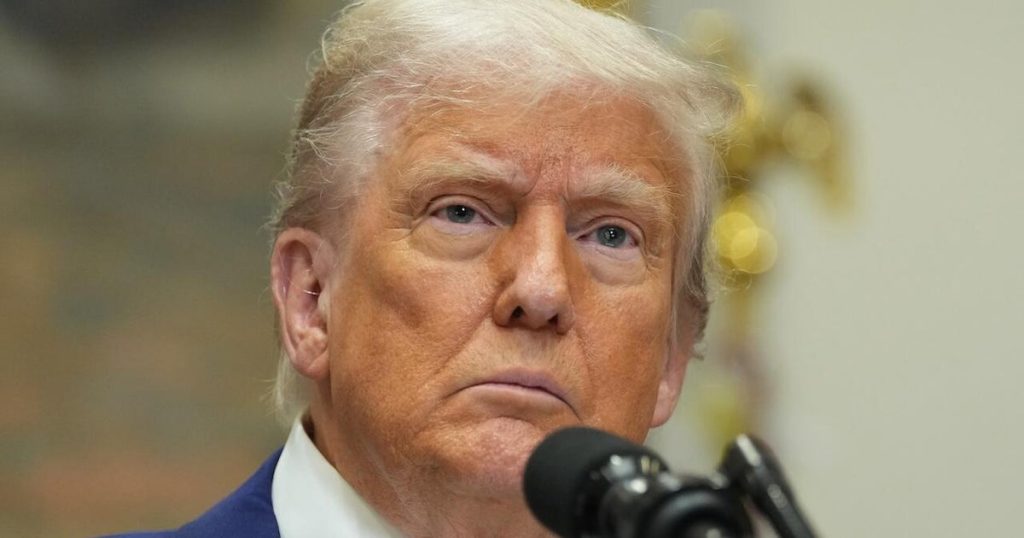In a recent business roundtable, President Trump announced that his administration will send letters to various nations outlining the new tariff rates the U.S. will impose on imports. He stressed the challenge of meeting with numerous nations expressing interest in trade agreements. The upcoming changes could significantly affect U.S. businesses, particularly in retail, where companies like Walmart and Target are warning of impending price hikes due to the tariffs.
| Article Subheadings |
|---|
| 1) Overview of Tariff Announcement |
| 2) Impact on American Retailers |
| 3) Administration’s Objectives |
| 4) Skepticism Among Trade Experts |
| 5) Future Prospects for U.S. Manufacturing |
Overview of Tariff Announcement
President Trump indicated that his administration will disseminate formal letters to other nations detailing the tariff rates that the U.S. plans to implement on imports. He highlighted the difficulty of engaging with the numerous countries eager to negotiate trade deals. During a recent roundtable discussion with representatives from the U.S. and the United Arab Emirates, the President mentioned, “It’s not possible to meet the number of people that want to see us.” The letters will be distributed by Treasury Secretary Scott Bessent and Commerce Secretary Howard Lutnick, who will communicate the rates that foreign businesses will be required to pay to operate in the U.S.
Impact on American Retailers
Retail giants, including Walmart and Target, have already begun to issue warnings regarding upcoming price increases, which they attribute to the new U.S. tariffs. Walmart, a significant player in the retail space, recently announced that it would start raising prices later this month. This follows President Trump’s temporary tariff reduction announcement for Chinese imports, which lowered rates from 145% to about 30%. Nevertheless, Walmart’s CEO Doug McMillon noted that even the reduced tariffs would result in higher costs for consumers. “We can control what we can control,” he stated during the company’s first-quarter earnings call.
Administration’s Objectives
The Trump administration has defended its tariff strategy by claiming it aims to revitalize American manufacturing and encourage both domestic and foreign companies to establish operations within the United States. On several occasions, President Trump has highlighted future investments, proclaiming that estimates range between $12 to $13 trillion in announced projects. “I think we’re heading toward the $12 to $13 trillion between projects already announced, mostly announced, but some are going to be announced very shortly,” he expressed, emphasizing the potential for economic growth. The administration believes that tariffs can serve as leverage to bring businesses back to American soil.
Skepticism Among Trade Experts
Despite positive proclamations from the administration, many trade experts remain doubtful about whether higher tariffs will effectively spur manufacturing in the United States. Analysts have pointed out that businesses typically base their decisions on a multitude of factors beyond tariff rates. These include labor costs, energy prices, transportation expenses, tax regulations, and the overall regulatory environment. Concerns have been raised that the political pressure exerted by the administration may not be sufficient to ignite a significant shift in manufacturing practices.
Future Prospects for U.S. Manufacturing
The future of manufacturing in the U.S. may hinge on the overall economic landscape and how businesses respond to the new tariff measures. As retailers brace for the impact of tariffs, market analysts are closely monitoring these developments.
“We expect the U.S.’s effective tariff rate to increase by about 13 percentage points this year to its highest level since the 1930s,”
said analysts from Goldman Sachs in a recent research note. Observers are interested in whether or not companies will genuinely shift their manufacturing locations, or if they will merely adjust their pricing strategies to pass the costs onto consumers.
| No. | Key Points |
|---|---|
| 1 | President Trump announced that letters informing other nations of tariff rates will be sent out by key administration officials. |
| 2 | Retailers like Walmart indicate that they will start raising prices due to new tariff-induced expenses. |
| 3 | The administration aims to encourage businesses to shift operations back to the U.S. through tariff measures. |
| 4 | Trade experts express skepticism about the actual effectiveness of tariffs in revitalizing U.S. manufacturing. |
| 5 | Market analysts project the U.S.’s effective tariff rate to rise significantly in the coming year, reaching historical highs. |
Summary
The administration’s recent tariff announcements signal a pivotal shift in U.S. trade policy, with significant implications for American retailers and the manufacturing landscape. As high-profile companies prepare to raise prices due to the financial repercussions of these tariffs, the question remains whether such measures will genuinely lead to a resurgence in U.S. manufacturing. Ongoing debates among trade experts reflect the complexity of trade relations and the multifaceted nature of business decisions.
Frequently Asked Questions
Question: What are the newly announced tariff rates?
The exact tariff rates have yet to be released, but they are expected to impose higher costs on goods imported into the United States.
Question: How will companies like Walmart respond to the tariffs?
Companies such as Walmart have already indicated that they will raise prices for consumers due to the increased costs associated with the new tariffs.
Question: Why does the Trump administration believe tariffs will benefit American manufacturing?
The administration argues that the tariffs will incentivize domestic and foreign companies to relocate their manufacturing operations to the United States, thereby boosting the economy and creating jobs.


